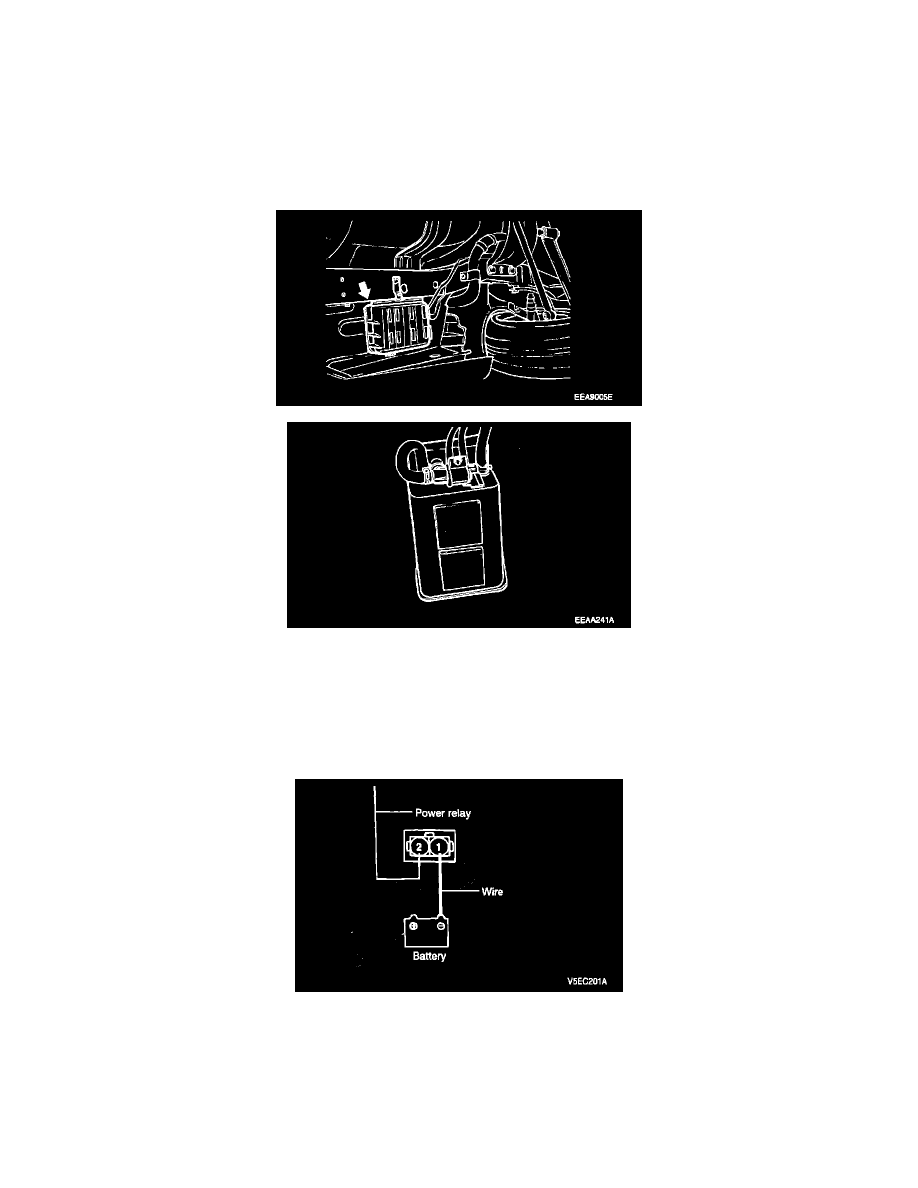Sonata V6-2.7L (2004)

Evaporative Emission Control Canister: Testing and Inspection
EVAPORATIVE (EVAP) CANISTER
Inspection
For monitor, there are a CCV and an air filter as the illustration.
1. Look for loose connections, sharp bends or damage to the fuel vapor lines.
2. Look for distortion, cracks or fuel leakage.
3. After removing the EVAP Canister, inspect for cracks or damage.
Check Of Canister Close Valve Operating
1. Connect the CCV pins to a wire as shown.
2. At idle, disconnect the CCV connector.
3. Inspect that CCV is close when attaching the wire to (-) of battery.
4. Inspect that CCV is open when detaching the wire from (-) of battery.
NOTE
In this case, if you use a very thin paper and attach it to hose to CCV, you can check easy the CCV condition.
1) If the paper is absorbed into or out, CCV is open.
